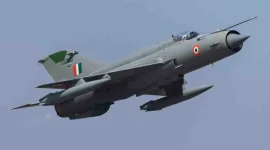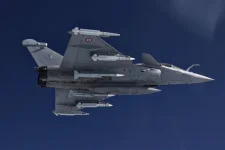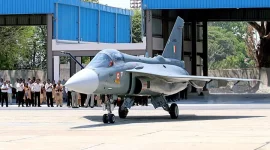- Views: 3K
- Replies: 10
India's first domestically produced Beyond Visual Range Air-to-Air Missile (BVRAAM), the Astra Mk1, represents a major milestone in the nation's journey towards self-sufficiency in critical defence technology.
Developed by the Defence Research and Development Organisation (DRDO) over nearly two decades, the project has overcome significant hurdles to deliver a potent weapon, though concerns persist over its slow integration across the Indian Air Force (IAF) fighter fleet.
The initiative for an indigenous air-to-air missile was launched in the early 2000s to create a national alternative to sophisticated foreign systems like the American AIM-120 AMRAAM and the Russian R-77.
The primary goals were to reduce dependence on costly imports, gain full control over the weapon's technology, and ensure flexibility in its deployment.
However, the path to success was fraught with challenges. The program's initial phases were delayed by major design issues, particularly with the missile's airframe, which failed to perform under the extreme stress of supersonic flight, forcing a complete and time-consuming redesign.
These developmental delays had significant strategic implications. While India was re-engineering the Astra, Pakistan acquired combat-proven AIM-120C-5 AMRAAM missiles from the United States for its F-16 jets in 2005.
This move gave the Pakistan Air Force (PAF) a distinct advantage in long-range aerial combat, with a missile capable of engaging targets up to 105 kilometres away.
This capability gap was highlighted during the 2019 aerial skirmishes following the Balakot airstrikes, where the PAF's use of AMRAAMs against IAF aircraft underscored the urgent need for a reliable Indian equivalent.
Following years of persistent effort and a comprehensive redesign, the Astra Mk1 finally achieved its design goals. Successful user trials between 2016 and 2019 confirmed its capabilities, leading to its formal induction into the IAF in 2020.
The missile is now a formidable weapon, equipped with an active radar seeker and capable of engaging enemy aircraft at ranges between 80 and 110 kilometres with a high probability of a kill.
In 2022, the Ministry of Defence signed a contract worth ₹2,971 crore with Bharat Dynamics Limited (BDL) for the production and supply of the missile, marking a major step in bolstering indigenous manufacturing.
Despite its proven technical capabilities, the operational deployment of the Astra Mk1 has been slower than anticipated. Currently, the missile is integrated with only a limited number of the IAF's Su-30MKI squadrons.
While clearance has been given for its integration with the LCA Tejas Mk1A, more than half of the IAF's fighter fleet, including upgraded MiG-29s, Mirage-2000s, and Jaguars, continue to rely on older or imported BVR missiles.
This staggered rollout dilutes the immediate strategic benefit of this advanced indigenous weapon.
The slow pace of fleet-wide integration is attributed to two main factors: the technical complexities of adapting the missile's avionics for each different aircraft type, and a strategic decision to allocate resources towards the development of its more advanced successors.
The upcoming Astra Mk2 is expected to feature a dual-pulse rocket motor for an extended range of approximately 160 kilometres, and the Astra Mk3 will push these capabilities even further.
Ultimately, the Astra Mk1 program has successfully established a foundation for India's indigenous missile development ecosystem. However, the lengthy development cycle meant the IAF had to operate without a competitive BVR weapon during a critical period.
For India to truly consolidate its air superiority, the swift and comprehensive integration of the entire Astra family of missiles across all compatible fighter platforms is essential.
The program serves as a crucial lesson for future indigenous defence projects on the importance of accelerated development and rapid operationalisation.




